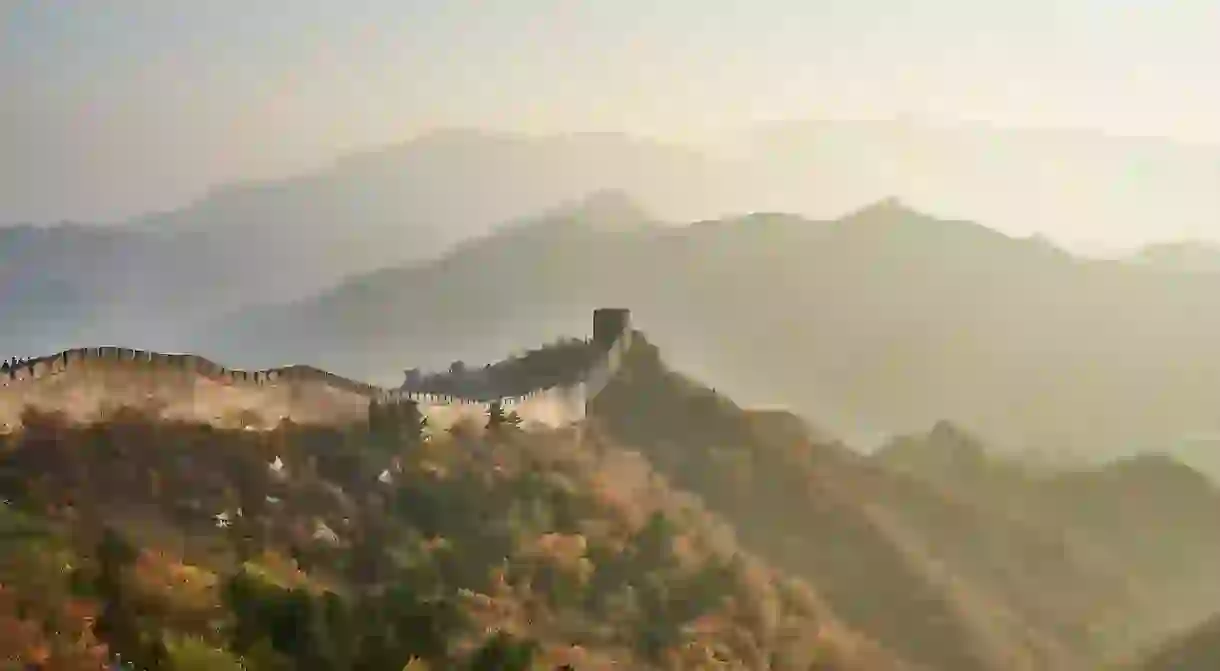11 Things You Didn't Know About the Great Wall of China

Often considered one of the most remarkable architectural feats in the world, the Great Wall of China is on many people’s travel bucket lists, but what exactly makes the wall so special?
It is Twice as Long as the Diameter of Pluto
When added up, the sections of the Great Wall reach approximately a whopping 6,400 km (3,797 mi), which is more than twice the diameter of Pluto. The wall is also longer than the diameter of Earth’s moon, which is about 3,480 km (2,162 mi).

It Cannot be Seen From Space
The myth that the Great Wall is visible from space has been perpetuated at least since 1938, long before humans landed on the moon. Although the structure is indeed formidable, the materials with which it was built tend to blend into the landscape, which makes it difficult to distinguish with the naked eye from space.

In Chinese, It’s Called Chang Cheng
The name Chang Cheng, which means “long wall,” appears to have originated in Sima Qian’s Records of the Grand Historian, a history book written during the Han-dynasty era that serves as a seminal authority on early Chinese society. The wall has alternatively been called Wan-Li Chang Cheng, which means “10,000-Mile Long Wall.”

Glutinous Rice Flour was Used as Mortar
Although little of the wall remains that was built by first Chinese emperor Qin Shi Huang, these sections from 220-206 BC were constructed with a mortar made of glutinous rice flour. The bricks themselves were made with rammed earth, stone, and wood.

Construction Began Before China was Unified
Qin Shihuang is typically credited as the brains behind the Great Wall, as large-scale construction of the wall began under his reign. However, he simply joined together pre-existing walls built by Northern kingdoms that he had conquered and unified.

Most of What’s Left is From the Ming Dynasty
New construction of the wall began in earnest during the Ming dynasty (1368–1644), and it also stopped during that time. Today, all construction on the wall is done only for preservation. An archaeological survey estimated that the wall spanned 8,850 km (5,499 mi) at the height of the Ming, meaning that more than 2,000 km (1,243 km) of the wall have been lost since.

Bricks Were Removed En Masse During the Cultural Revolution
China’s Cultural Revolution (1966-1976) devastated historical sites across the country, including the Great Wall. During that time, locals were encouraged to remove bricks to build homes and other structures.

Camping is Allowed on Certain Sections
Several travel agencies offer overnight camping trips to the Great Wall, where lucky travelers can pitch tents on living history and watch the sun rise over one of the greatest feats of architecture in the world.

The Wall Crosses Nine Provinces and Municipalities
From east to west, the Great Wall stretches across Liaoning, Hebei, Tianjin, Beijing, Inner Mongolia, Shanxi, Shaanxi, Ningxia, and Gansu, though not continually. Although many travelers stick to the well-tread sections in Beijing, many other provinces offer wilder and more unique views.

Jiankou is Considered Most Photogenic
Beijing’s Jiankou is often regarded as the most photogenic section of the Great Wall. Due to the steep and dramatic mountains and the wall’s rugged untouched splendor, Jiankou has the kind of epic angles that make photographers salivate.

Badaling and Mutianyu are Most Visited
Jiankou is no easy hike, and it can, in fact, become dangerous for inexperienced climbers. A less challenging, but nevertheless rewarding, visit to the Great Wall can be made at Badaling or Mutianyu, which are based in Beijing. Avoid visiting during Chinese holidays or peak tourist season, however. Those who do make the journey during these times will experience the true meaning of the Chinese phrase ren shan ren hai, which means “people mountain people sea.’














